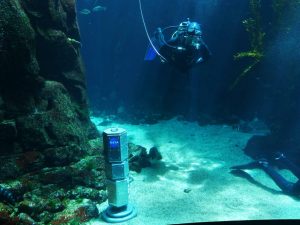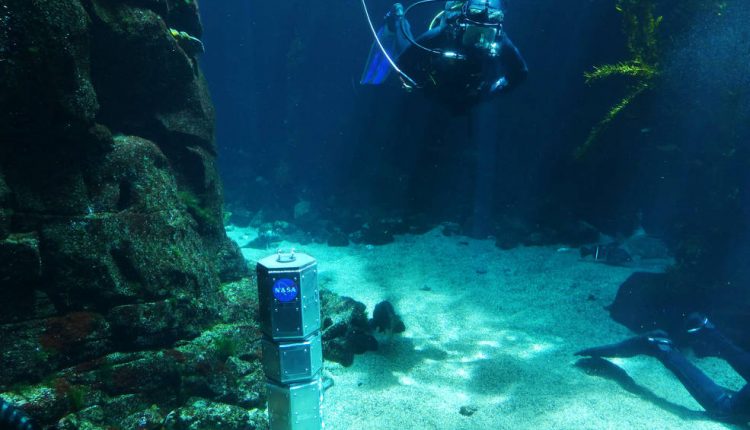Researchers at NASA’s Jet Propulsion Laboratory in Pasadena, California sent their 24-foot under-ice rover down to the bottom of a 188,000-gallon aquatic tank at the California Science Center in Los Angeles to test the innovative rover’s systems for future missions.

The goal is to explore oceans on other planets in search of habitable environments.
“A lot of what we do in deep space is applicable to the ocean,” said Klesh, principal investigator for the rover at JPL and volunteer diver at the science center. “This is an early prototype for vehicles that could one day go to Europa and other planetary bodies with a liquid ocean covered by ice. It’s ideal for traveling under the ice shelf of an icy world.”
JPL researchers don’t expect the rover to only be used in space, though. According to Klesh, the rover can be used on Earth to study the Arctic and Antarctic.
For now, NASA researchers are calling the robot the Buoyant Rover for Under-Ice Exploration (BRUIE), and it would typically float and have wheels that could roll along on the underside of ice. While underwater, the rover would take images and collect other data to help scientists understand the important interface between ice and water.
The goal is to explore oceans on other planets in search of habitable environments.
The first version of the rover was a two-wheeled vehicle that was tested in Alaska in 2012. The team sawed a hole into the ice, placed the rover underwater, and then back at JPL in California, engineers drove the rover remotely.
“This was the first time an under-ice vehicle had been operated via satellite,” said Klesh.
The updated version of the robot is longer, has a thicker body and is designed to operate in oceans as deep as 700 feet. The rover’s body contains computers, sensors and communication equipment and on either side of the central section is a “pod,” each with sensors, lights, a camera, batteries, instruments and two motors. The rover’s software is similar to what is being used for Mars Cube One, two communication-relay CubeSats that will launch with NASA’s InSight Mars lander in 2016.
Next steps include increasing the rover’s autonomy and tweaking its hazard avoidance capabilities. Eventually the researchers want to get the rover to survey a frozen lake independently.
Story via NASA.

